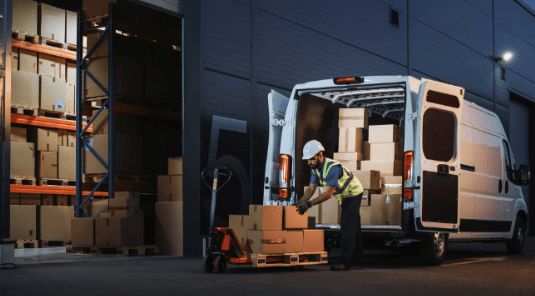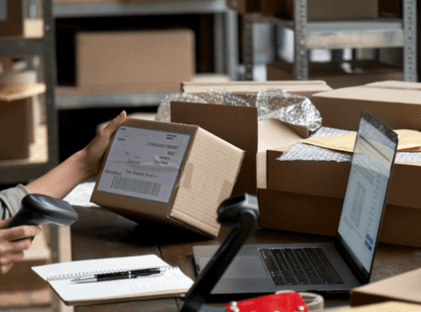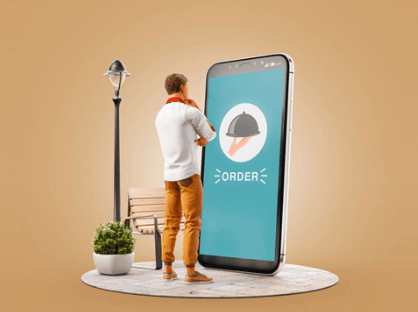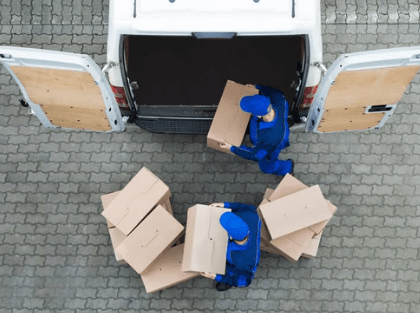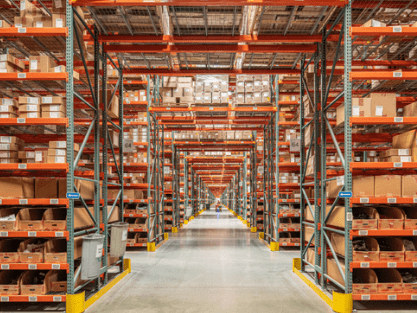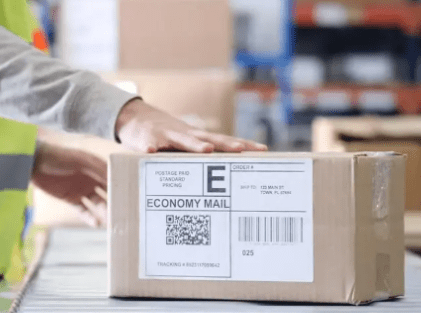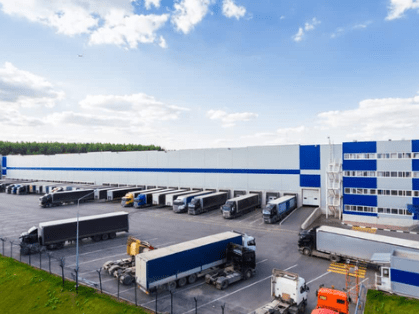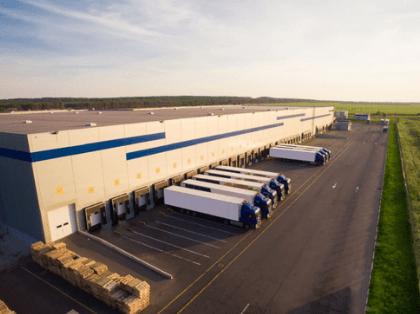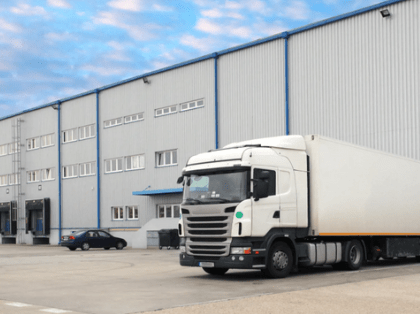With a global market worth around $352 billion, and a predicted annual growth rate of 25%, dropshipping has become an attractive prospect for anyone considering dipping their toes into the world of ecommerce.
With low upfront costs and overheads, it's easy to see why this business model is frequently favoured over a traditional ecommerce business.
Even so, it's not all plain sailing, and there are several challenges to overcome if you're going to survive in the highly competitive ecommerce landscape. One aspect that puts people off launching a dropshipping business is the depressingly high failure rate of around 90%, most within four months of the initial launch.
So, before you jump in, you need to do some serious homework to discover all the facts and be prepared for the challenges ahead!
In this Direct Fulfilment 365 blog, we're digging deep into the subject of dropshipping to see how orders are fulfilled. We'll also explore the idea of outsourcing your order fulfilment process to a third-party logistics provider (like us!) to help you decide whether it's a wise move.
Let's kick off with a brief reminder of what the dropshipping business model is...
What Is A Dropshipper?
Imagine running an online shop where you don’t need to worry about storing products, packing parcels, or dealing with warehouses and warehouse workers. Instead, when a customer purchases a product, you simply buy the item from a third-party supplier, who then ships it directly to the customer. You pocket the difference between the price the customer pays and the cost from your supplier.
Essentially, you’re the middleman in the dropshipping process, a bridge between the buyer and the supplier. You showcase your products, manage the store, and handle customer queries, but the heavy lifting (literally) is done by someone else!
Dropshipping Order Fulfilment
A traditional online store will typically invest in stock, which means dealing with inventory management. They might handle order fulfilment themselves in-house at a warehouse, or they may outsource this to a 3PL like Direct Fulfilment 365.
In simple terms, the fulfilment process describes the path, or supply chain, from the moment the order is placed right up to the time it reaches the customer.
If a retailer holds the stock themselves, they'll be responsible for picking, packing and shipping orders, whether personally or through a 3PL. That means selecting the correct items, packaging them appropriately and dispatching them via a reliable courier or delivery company.
For a dropshipping business, however, this process is completely out of their hands. Here's how it works:
The Customer Places An Order
A customer visits the dropshipper’s online store - this could be a Shopify website, an Amazon or eBay listing, or even a social media shop. They browse through the product selection, add items to their basket, and proceed to checkout. Once they confirm their order, they make the payment at the retail price you’ve set.
This stage is crucial because the impression your online store leaves can determine whether the customer proceeds to checkout or abandons their cart. Currently, the cart abandonment rate is around 70%, meaning that for every ten customers who add items to a cart, seven will leave before completing the purchase!
Engaging product descriptions, high-quality images, and a smooth, secure payment process are all essential for boosting conversion rates. A seamless shopping experience not only builds trust but also increases the likelihood of repeat purchases.
The Dropshipper Forwards The Order To The Supplier
After the customer’s payment is processed, the dropshipper purchases the item from a third-party supplier, often at a significantly lower wholesale price. This supplier could be a wholesaler, manufacturer, or another ecommerce platform (we'll explore this in more detail later).
Depending on how the dropshipping store is set up, the ordering process can happen automatically through an integrated system, where the order is immediately forwarded to the supplier, or manually, where the dropshipper inputs the order details. Either way, the dropshipper provides the supplier with the customer’s shipping information, ensuring that the product goes directly to the customer’s address.
Many successful dropshippers rely on automated tools that sync with their stores, reducing the risk of human error and allowing them to scale their operations effortlessly. However, maintaining good communication with suppliers remains vital to ensure smooth order processing and timely shipping.
Supplier Ships The Product
The dropshipping supplier processes the order once they receive it. They package and ship the product directly to the customer, which is a key feature of the dropshipping model. In some cases, the package will be white-labelled, meaning it carries no branding or identifiers from the supplier. This makes it appear as though the product was shipped from the dropshipper’s own business, maintaining brand consistency. However, branding isn't always offered, or it comes at a much higher cost.
Shipping Logistics
Shipping times can vary depending on the supplier’s location and the shipping method chosen. While many suppliers offer fast shipping options, particularly for domestic deliveries, international orders - especially from suppliers in countries like China - can take longer. This is why setting realistic delivery expectations with customers is so important.
To enhance customer satisfaction, many dropshippers choose suppliers who offer tracking information. This allows customers to monitor the progress of customer orders and reduces the likelihood of queries or complaints about delivery times.
The Customer Receives The Order
When the customer receives the package, they are usually unaware that it came from a third-party supplier. Since the product arrives without any indication of the original source, it reinforces the perception that the order was handled entirely by the dropshipper.
If the customer is happy with their purchase, this positive experience boosts the likelihood of repeat orders and word-of-mouth recommendations. However, if there’s an issue - such as a damaged item, incorrect order, or delay - the customer reaches out to the dropshipper for support.
The dropshipping business is responsible for managing customer service and addressing any problems that arise. In most cases, they liaise with the supplier to resolve the issue, whether that means arranging a replacement, issuing a refund, or providing additional information. Maintaining clear communication and offering prompt, helpful responses can turn a potentially negative situation into a positive one, building long-term trust and loyalty.
By taking ownership of the customer experience and ensuring that any concerns are swiftly addressed, dropshippers can cultivate a loyal customer base - even when the actual fulfilment is handled by someone else!
Why Is Dropshipping So Popular?
We've given a few hints as to why this is the case, but it's worth breaking it down to get the bigger picture of why the dropshipping business model has taken off in the past decade or so...
This method has gained immense popularity in the world of ecommerce, and this is no great surprise when you check out the potential benefits of dropshipping.
This method offers an accessible entry point for aspiring entrepreneurs, allowing them to build an online business without the traditional hurdles of managing inventory or dealing with complex logistics. But like any business model, it comes with its own set of advantages and challenges. Here's a closer look at the pros and cons of dropshipping.
Minimal Investment & Low Overheads
Low upfront costs are one of the most attractive features of dropshipping. Unlike traditional retail, where you’d have to invest a significant amount of money in purchasing stock upfront, dropshipping eliminates this need entirely. You only buy a product after a customer has placed an order, which means you’re never left with unsold inventory gathering dust in a warehouse. This drastically reduces financial risk and makes it easier to test new products or niches without committing to a large budget.
Warehouse Space
Another major benefit is that there’s no need for warehousing. Since the supplier handles the storage, packaging, and shipping of products, you can forget about the hassle of managing a physical space for inventory. No more worrying about paying for storage units, keeping track of stock levels, or hiring staff to handle fulfilment. This frees up your time and resources, allowing you to focus on growing your business and enhancing the customer experience.
Fully Scalable
Scalability is another key advantage of the dropshipping model. As your ecommerce store gains traction, adding new products or expanding into different niches is remarkably simple. Since you’re not constrained by physical inventory, you can list an unlimited range of products without having to worry about logistics. Whether you want to introduce a trending gadget or tap into a seasonal market, you can do so quickly and efficiently. This flexibility makes it easier to adapt to market trends and diversify your offerings without overhauling your business operations.
Work-Life-Balance
You can run a dropshipping business from practically anywhere, as long as you have an internet connection! This is one of the major plus points that attracts people to ecommerce business. You can check customer orders from any device and keep tabs on everything from anywhere in the world.
You don't have any staff issues to sort out, and you don't have to worry about the maintenance, upkeep and safety of your premises. Essentially, it's just you and your laptop.
It's Not All Good News!
While the benefits are undeniable, it’s important to acknowledge the potential downsides as well. One of the biggest challenges with dropshipping is the lower profit margins. Since you’re purchasing individual items from suppliers, you don’t benefit from the bulk discounts that traditional retailers enjoy. As a result, the price gap between your supplier’s cost and your retail price is often smaller, which can make it harder to generate significant profits - especially in highly competitive niches.
Another drawback is the limited control over shipping times and product quality. When you rely on third-party suppliers, you’re at the mercy of their processes. If a dropshipping supplier experiences delays or sends out a subpar product, it reflects poorly on your business, even though it’s out of your control. Shipping times can also vary widely, especially if products are being dispatched from overseas suppliers, which can lead to frustrated customers if expectations aren’t managed properly.
Dropshipping Supplier Reliability
Finally, there’s the issue of dependence on supplier reliability. Your entire business hinges on your suppliers fulfilling orders accurately and on time. If they fail to deliver, it’s your reputation that takes the hit. Building strong relationships with trustworthy suppliers is essential, but even the most reliable partners can experience occasional hiccups. Being prepared to address these challenges and having backup suppliers in place can help mitigate these risks.
In essence, dropshipping offers an appealing pathway to ecommerce success, but it requires careful management and strategic planning. By understanding both the advantages and potential pitfalls, you can make informed decisions and position your business for long-term growth. If you’re ready to dive into the world of dropshipping, it’s all about balancing convenience and flexibility with a keen eye on supplier reliability and customer satisfaction.
And if you need expert advice, the Direct Fulfilment 365 team is always on hand.
The Dropshipping Supply Chain
So, if an online store contacts a third party when a customer places an order, where do the goods come from? There are several answers, and these help us with our main question as to how dropshippers fulfil orders...
Wholesale Distributors
Wholesalers act as intermediaries between manufacturers and retailers, purchasing goods in bulk and selling them in smaller quantities. For dropshippers, partnering with a wholesaler provides an effective way to access a wide range of high-quality products without managing inventory. Also, many wholesalers now offer dropshipping services specifically tailored to your business requirements, making it easier to fulfil orders efficiently.
A major advantage of using a wholesaler is the broader product selection. Since wholesalers source from multiple manufacturers, dropshippers can easily diversify their offerings and test different niches without dealing with multiple suppliers. Another benefit is faster order processing, as domestic wholesalers often ship orders more quickly than overseas suppliers, improving customer satisfaction and reducing refund requests.
Wholesalers also offer the potential for bulk discounts if you transition to a hybrid model, allowing you to purchase high-demand items in bulk and maximise profit margins. However, wholesale prices can be higher than buying directly from manufacturers, so it’s essential to ensure the pricing structure aligns with your business goals.
Manufacturers
Manufacturers are at the very top of the supply chain, producing goods directly before they make their way to wholesalers, retailers, or end customers. For dropshippers, partnering with a manufacturer can be a great idea, as it often means cutting out the middleman and securing products at much lower costs. Since manufacturers typically offer their goods at wholesale prices, this translates into higher profit margins - an essential factor for any successful dropshipping business!
Another major advantage of working with manufacturers is the superior quality control that comes with sourcing products directly from the source. Because you’re bypassing intermediaries, you have greater confidence that the items meet customer expectations. This not only reduces the likelihood of returns or complaints but also helps you maintain a strong reputation and build customer trust over time.
Custom Branding Options
Working with manufacturers also opens the door to custom branding or private labelling, which can elevate your business to the next level. By adding your own branding to the products, you create a more personalised experience and strengthen customer loyalty. Whether it’s customised packaging, unique labels, or even designing bespoke products, private labelling allows you to stand out in a crowded marketplace and command higher prices.
However, it’s worth noting that not all manufacturers are equipped to handle individual dropshipping orders, as many are geared towards bulk production and large-scale distribution. Some may have minimum order requirements or lack the infrastructure to ship products directly to individual customers. This makes it essential to identify manufacturers who are dropshipping-friendly and willing to fulfil single orders efficiently.
Establishing a solid relationship with a reliable manufacturer can take time, but the long-term benefits - such as consistent product quality, better pricing, and enhanced branding opportunities - can give your business a significant competitive edge.
Print-on-Demand (POD) Suppliers
Print-on-demand suppliers specialise in creating customised products, such as clothing, mugs, phone cases, and home décor, only after a customer places an order. This business model allows dropshippers to offer unique, branded items without the need for upfront investment or maintaining inventory. Since products are printed and shipped as orders come in, POD is a low-risk way to explore creative niches and build a strong brand presence.
POD does offer a couple of advantages for your ecommerce website:
- Custom Design and Brand Identity - POD empowers dropshippers to create bespoke designs and offer personalised products that resonate with their target audience. This strengthens brand identity and fosters customer loyalty, as shoppers appreciate the opportunity to purchase unique, customised items.
- No Inventory Management - Since products are only produced when an order is placed, there’s no need to manage stock or worry about unsold inventory. This eliminates the risk of overstocking and minimises storage costs, making it easier for entrepreneurs to focus on marketing and scaling their businesses.
However, it’s worth noting that POD services often come with higher production costs, which can reduce profit margins if not managed carefully. To maintain profitability, it’s essential to set pricing strategically, factoring in both production and shipping costs while offering perceived value to customers. Despite the potential for lower margins, the flexibility and branding opportunities that POD offers can make it an excellent option for online sellers looking to carve out a unique niche in the market.
Third-Party Logistics Companies
Third-party logistics suppliers offer a hybrid approach that bridges the gap between traditional dropshipping and direct fulfilment. They provide a full-service solution where they store your inventory, handle packaging, and ship products directly to your customers. For dropshippers looking to scale their business or improve order fulfilment, partnering with a 3PL supplier can be a smart move!
Read our post "What is 3PL fulfilment and why do growing businesses need it".
How 3PL Suppliers Work In Dropshipping
With 3PL dropshipping, the process looks a bit different from the usual model. Instead of relying on suppliers to ship individual items after each order, you purchase inventory in bulk and send it to a 3PL warehouse.
Here's how this works:
- Order Processing - When a customer places an order, the 3PL supplier picks, packs, and ships the product on your behalf.
- Inventory Management - They store your inventory securely and monitor stock levels to ensure you don’t run out of popular items.
- Shipping and Fulfilment - 3PL providers often have multiple warehouses across regions, enabling faster delivery by shipping from the location closest to the customer.
So, which is the best option? Again, we may be biased here, but a partnership with a 3PL can minimise the risks and increase profit margins. The trick is to find the right company.
Advantages Of Using 3PL Suppliers For Dropshipping
To tempt you further, here are some of the benefits and advantages that you could enjoy if you outsource dropshipping order fulfilment to a professional third-party service:
Faster Shipping Times
Since 3PL suppliers often have fulfilment centres located closer to your target market (sometimes even globally), shipping times are significantly reduced compared to sourcing from overseas dropshipping suppliers. Faster delivery translates to higher customer satisfaction and fewer complaints.
Reduce Shipping Costs
Due to the large volume of orders they handle, 3PLs are able to take advantage of scales of economy to negotiate preferable rates for shipping. These allow you to pass the savings on to your customers, which is always a popular move.
Improved Quality Control
When you send your products to a 3PL supplier, you have the opportunity to inspect them beforehand, ensuring they meet your quality standards. Unlike traditional dropshipping, where quality can vary depending on the supplier, 3PL gives you more control over what reaches your customers.
Custom Branding And Packaging
Many 3PL providers offer options for custom packaging, branded inserts, and personalised unboxing experiences. This helps build brand loyalty and gives your business a more professional image, something that’s hard to achieve with standard dropshipping.
Multiple Sales Channels
All leading 3PLs use advanced inventory management software that can be integrated with your existing systems. Instead of juggling several platforms, you can view all your sales channels, inventory, stock levels, sales figures, etc., from a single point.
This makes life a lot easier and allows you to devote time to developing your business.
Scalability And Automation
As your business grows, managing order fulfilment can become a logistical nightmare. 3PL providers automate the entire fulfilment process, allowing you to focus on scaling your business without worrying about packing and shipping. They can handle high order volumes seamlessly, which is ideal for seasonal spikes or sudden sales surges.
Reduced Cart Abandonment
One of the biggest reasons customers abandon their carts is long shipping times, which can lead to frustration and hesitation at the checkout stage. In today’s fast-paced e-commerce world, shoppers expect their orders to arrive quickly, and any delay can result in lost sales.
With 3PL fulfilment, faster delivery options can drastically improve conversion rates by meeting these expectations for quick shipping. Since many 3PL providers have multiple fulfilment centres strategically located near key markets and transportation hubs, they can process and dispatch orders more efficiently. This ensures that products reach customers in a shorter time frame, reducing cart abandonment and boosting overall customer satisfaction.
No Minimum Order Quantity
Many 3PL providers (including Direct Fulfilment 365) don’t impose a minimum order volume, making it easier for smaller dropshipping businesses to take advantage of their services without facing high upfront costs. This flexibility allows new and growing sellers to benefit from streamlined fulfilment and faster shipping without committing to large inventory orders. By eliminating volume restrictions, 3PLs enable smaller businesses to remain profitable, test new products, and scale at their own pace while maintaining cost efficiency.
Potential Drawbacks Of Using 3PL Suppliers
We've painted a pretty positive image of using a 3PL, and that's to be expected. After all, it's an area in which we excel!
Even so, it's only right and fair to balance this with the possible downsides:
- Higher Upfront Costs - Unlike traditional dropshipping where you only pay for a product once a customer makes an order, 3PL requires you to purchase inventory in advance. This ties up capital and carries a risk if certain products don’t sell as expected.
- Storage Fees and Fulfilment Costs - 3PL suppliers charge for warehousing, order picking, packaging, and shipping. While these costs can be offset by faster delivery and improved customer retention, they can add up quickly if you’re not managing your inventory efficiently.
- Inventory Management Risks - Since you’re purchasing inventory upfront, there’s always a risk of overstocking or underestimating demand. Managing stock levels requires careful forecasting and an understanding of your market trends.
However, if you choose the right third-party logistics supplier, you can drastically reduce the risks and avoid all of the above issues. If you want to know more, contact Direct Fulfilment 365 today.
Is 3PL Dropshipping Fulfilment Right For You?
3PL dropshipping is ideal for businesses that have grown beyond the limitations of traditional dropshipping and are ready to scale. It works well if you:
- Want faster shipping times to improve customer satisfaction.
- Are building a strong brand and need customised packaging and fulfilment options.
- Have a reliable product line and can afford to invest in bulk inventory.
However, for beginners or those still testing product viability, traditional dropshipping may be a safer, lower-risk option. But once your business gains momentum, transitioning to 3PL can help streamline operations, improve your brand image, and give you a competitive edge in the ecommerce space.
Check out our post “Ecommerce fulfilment vs dropshipping: which is right for you”.
The Last Word
As a business model, dropshipping is likely to continue to enjoy massive growth in the future, as predicted. However, the majority of start-ups will still fail, and this is sadly inevitable. It's essential to remember that you are not guaranteed instant success.
Because of this, if you're thinking of entering the arena of online selling, it pays to explore every avenue and look into dropshipping alternatives. Consider all the pros and cons and - above all - be realistic.
On a positive note, technology is continually advancing, with apps like DEers that allow you to process orders through multiple dropshipping suppliers.
Also, you have the option of partnering with a great 3PL, like Direct Fulfilment 365. With our assistance and expertise, you make the most of the dropshipping process and reap the rewards while avoiding the common pitfalls.
Ready to take up the challenge? Then contact us today and we'll take your online store to new heights!

